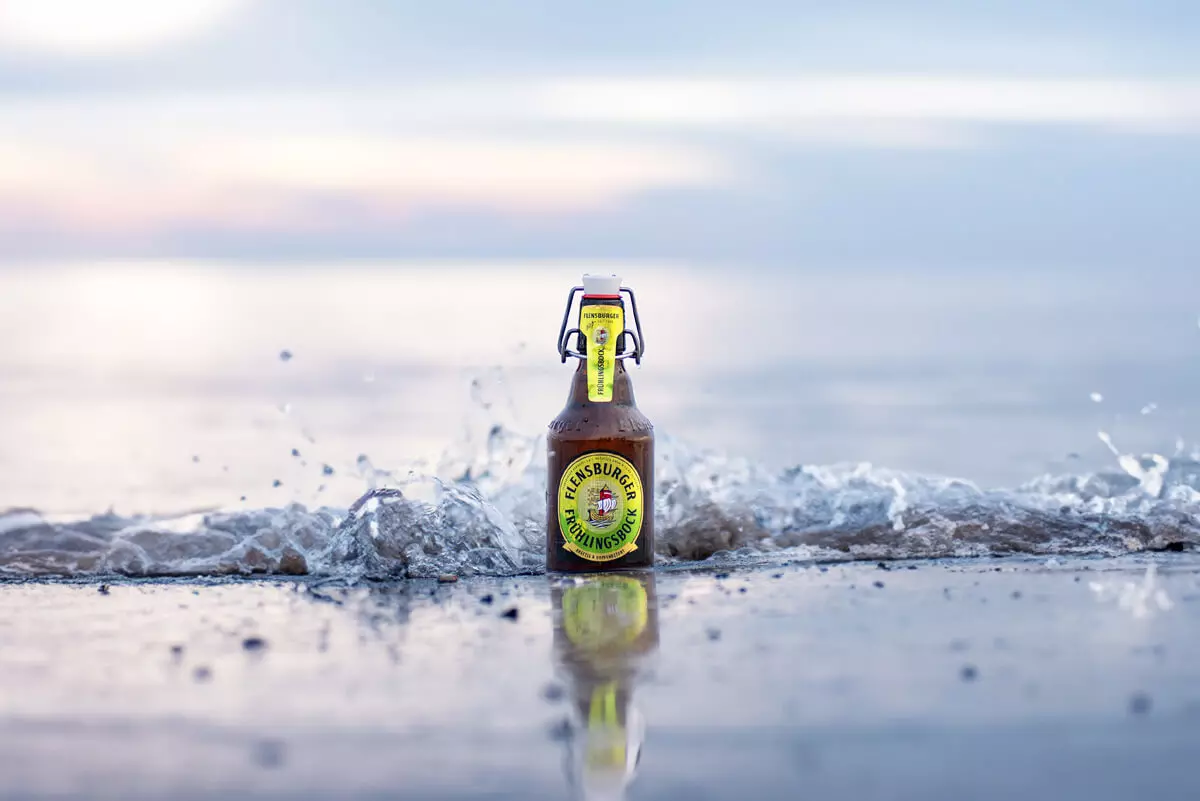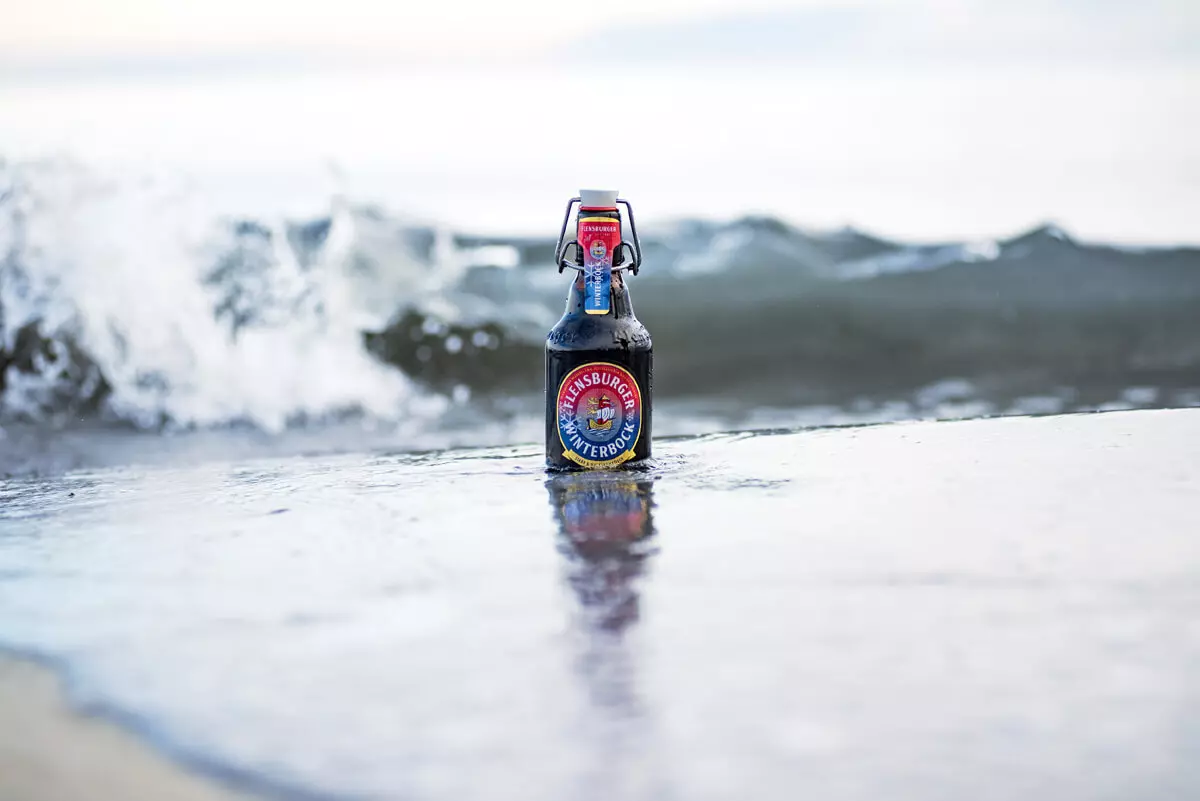
What Is Bock Beer?
Abstract
Strong, full-bodied, delicious - bock beer is something very special. You'll find out exactly what's behind the name in a moment.
Bock beer is a real powerhouse among beers. It is one of the strong beers and packs quite a punch.
To be allowed to call itself a bock beer, the original gravity must be over 16 °P. This stands for degrees Plato and is the unit of measurement for original gravity when brewing beer. For bock beer, this means more malt, more flavor and, of course, more alcohol. With an alcohol content of around 6.5-8 % vol. alcohol content, the brew is not for the faint-hearted.
But what does that actually mean, original gravity? Well, it's the proportion of dissolved substances in the unfermented beer wort, mainly malt sugar. The higher the value, the more sugar is available to the yeasts and the more alcohol is produced during fermentation.
History & Origin.
Our beloved bock beer has an interesting past. It originally comes from Einbeck in Lower Saxony. Even in the Middle Ages, the people of Einbeck knew how to brew a beer that lasts a long time and really packs a punch.
In the 14th century, Einbeck was a real beer stronghold and a member of the Hanseatic League. Einbeck beer was so popular that it was even exported to England, Scandinavia and the Middle East. That was a real sensation at the time.
When the beer then found its way to Bavaria, the “ainpöckisch” beer became “ein Bock” in the local dialect - and suddenly the Bock beer had lost its name.
The Bavarians were so enthusiastic about the brew that they started brewing it themselves. The Munich court brewmaster Elias Pichler is said to have brewed the first Bavarian bock around 1614.
Bock Beer Varieties.
There is not just one type of bock beer - no, we have the full range! Let's take a closer look at the most important varieties:
-
Doppelbock: This has even more power with at least 18 °P original wort. Originally brewed by monks as liquid food during Lent, today it is a real heavyweight among beers. Many German Doppelbocks have names ending in “-ator” as a tribute to the first Doppelbock, the Paulaner brewery's Salvator.
-
Eisbock: It even tops 10 % vol. alcohol. As the name suggests, ice is used here. Part of the water is frozen out and removed, concentrating the alcohol and aromas. A real taste experience!
-
Heller Bock: Also known as Maibock or Frühlingsbock, it is lighter in color and often somewhat hoppier in taste. Perfect for spring!
-
Dark bock: The classic bock - also known as winter bock, malty-sweet and with a beautiful dark color. Ideal for cold winter days.
-
Weizenbock: For the wheat beer fans among us. Wheat malt is used here, which gives the beer a fruity note.
Seasonal Aspects.
Bock beer is like a time machine in a glass - it reminds us of certain seasons and festivals. In the past, for example, Maibock heralded the end of Lent. Today, bock beers are available all year round, but they are particularly popular in spring and winter.
In Bavaria, the bock beer season runs from November to May. When the beer garden season and the Oktoberfest are over, the bock beer season begins with Dunkelbock, Festbock (Christmas bock), Doppelbock and Maibock.
Maibock is the herald of spring among bock beers. It is traditionally tapped in May and heralds the warmer season. In the fall and winter, the stronger, darker bock beers warm us up.
Many breweries, including us at FLENS, have their own seasonal bock beers. Our Flensburger Frühlingsbock brings a touch of spring into the glass, while the Winterbock is perfect for cozy evenings.


Production Of Bock Beer.
More malt is used in the production of this brew than in other types of beer, which gives bock beer its characteristic malty taste. The mash is thicker as less water is added.
The brewing process begins with malt milling. This involves crushing the malt to release the starch inside. Then comes the mashing: The crushed malt is mixed with water and heated.
After lautering, in which the solid components are separated from the wort, boiling follows. This is where the hops are added to provide the bitterness and aroma. Less hops are often used in bock beers to emphasize the malty character.
Incidentally, most bock beers are bottom-fermented and are brewed from barley malt. But there is no rule without exception - there are also top-fermented wheat bock beers.
Fermentation takes longer with bock beers than with normal beers, often several weeks. This is followed by a longer maturation phase in which the aromas can fully develop.
Taste Profile.
Bock beer is like a hug for your taste buds - malty, sweet and damn full-bodied. The hops note remains discreetly in the background. Due to the special, often dark malts, bock beer brings with it the roasted aromas provided by the malt. The caramel sweetness and high alcohol content are often emphasized by the bitterness of the hops brewed in.
Depending on the variety, bock beers can have very different flavor profiles. Light bocks are often somewhat hoppier and have light citrus notes, while dark bocks can taste more like caramel, chocolate or roasted nuts.

What Goes Well With The Taste Of Bock Beer?
Bock beer is best enjoyed chilled between 8 and 12 degrees. And what goes well with it? A juicy piece of beef or game, for example. Try a roast venison or a hearty beef roulade with dark bock - it's a dream!
If you're a vegetarian, cheese platters, pumpkin soup or mushroom ragout with bread dumplings are delicious alternatives.
But bock beer also cuts a fine figure as an aperitif or even with dessert. A doppelbock goes perfectly with dark chocolate or a strong cheese. And a wheat bock? It's great with fruit cake or apple strudel.




